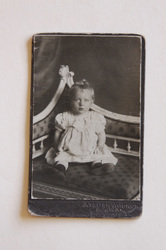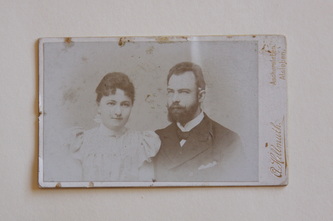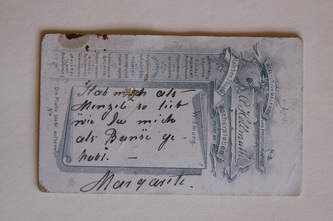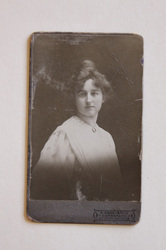 Within my ever growing collection of photographic objects are a few photos known as Cabinet Cards. In the mid 1800's photographers began attaching thin albumen prints to a thicker cardboard and were modeled in size (2x3.5) and intent on the calling or buisness card. By the 1870's the size increased to about 4.5x6.5 inches but maintained the albumen print on adhered to the board. The cards were greatly popular for both the photographer and consumer. For the photographer they had an easy marketing in the very form of its product. Their popularity ran through the early 1900's when it became increasingly possible to photograph with ones own camera apart from the studio. One of the things I love about these cards is that it answers a few questions about these mysterious photographs...who took the photograph, and where was it taken. As you can see from the image up in the corner, the photographer was Albert Blankhorn in Koln or Cologne, Germany. Once you know someones name, you can begin to do a little cyber sluething. Here are some more photos taken by Albert. His studio (Atelier) was located at 79 High Street (Hohestrasse) which you can still find on Google maps here. While you are there, take a look at the street view. Perhaps this is even the shop where he once worked. With the help of Google translate, we can figure out what the lower left means. While some of the paper is missing, it says something like "Portraits through/by work in oil, pastel, watercolor, and platinum prints. "vergrösserungen nach jedem bilde" - "Magnifications for every fancy" "die platten bleiben fur nachbestellungen aufbewahrt" - "The plates remain stored for repeat orders." So apparently one could order reprints down the road. In the upper right hand corner, we learn the Mr. Blankhorn was the court photographer (Hof-photograph) for what roughly translates as the Grand Duke of Hesse on the Rhein (Sr.Kgl.Hoh.d. Grossherzogs v.Hessen u.bei Rein). Learn about the House and Rulers of Hesse here. Given the dates of usage for Cabinet Cards, perhaps we may assume, that his reference to the Grand Duke refers to Louis IV.
0 Comments
Your comment will be posted after it is approved.
Leave a Reply. |
Ryan StanderArchives
January 2018
Categories
All
|












 RSS Feed
RSS Feed
